Fowler: National and International Steam Power

Ploughing is one of the most essential jobs on the farm, as it tills the earth and results in a stronger yield. Introduced in the latter half of the 19th century, steam ploughing began to mechanise the process. It allowed for greater productivity and speed at a time of enormous population growth which demanded more efficient farming. It also compensated for the falling availability of rural labour.
John Fowler & Co, for which we hold significant archives, was one of the pioneers of steam power in farming. They not only spread steam ploughing across England, but also introduced agricultural steam power to a number of countries around the globe.
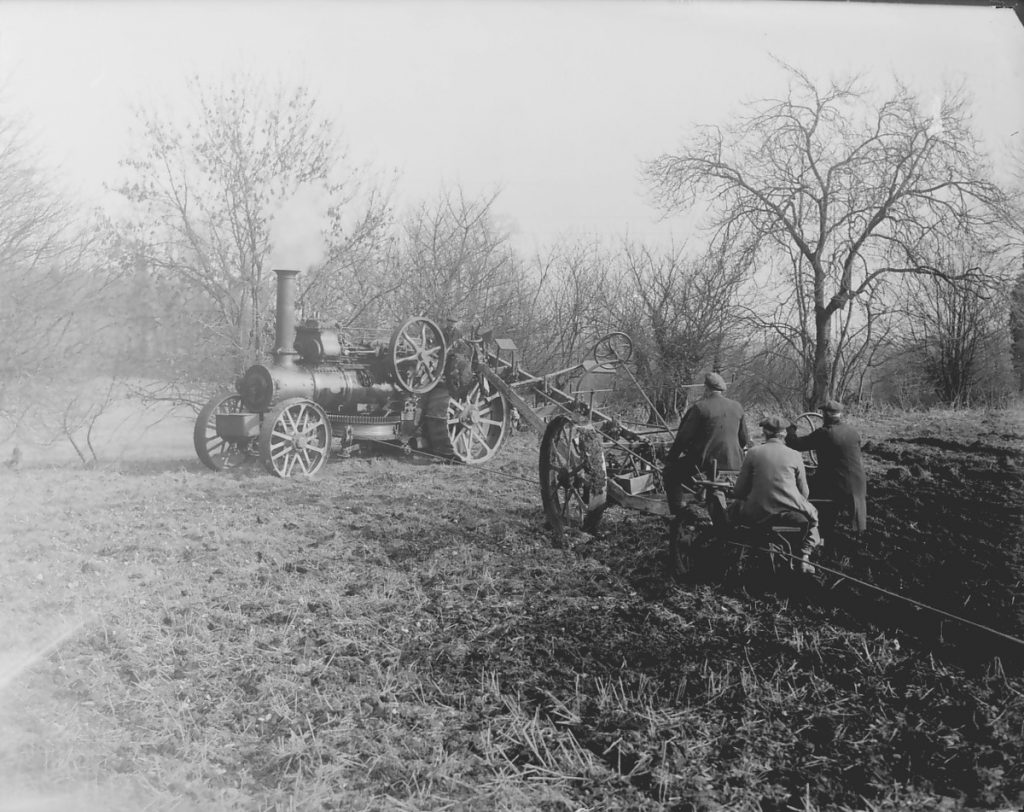
Ploughing Mechanisation: A Brief History
The industrial revolution had moved many farm workers away from agriculture to seek a new and more prosperous life in the developing towns and cities. As agricultural workers moved away from rural areas, farmers had fewer hands to help them with cultivating and harvesting. The growing urban populations meant a bigger demand for food production at a much faster pace. Farmers now needed more efficient ways of working.
Ploughing was one of the most important jobs of the agricultural year, as it laid the foundation of a good harvest in the autumn seasons. It was a hard, slow job which relied on strong horses or oxen and a good knowledge of the land that was being cultivated. Different areas of the country had their own types of plough which was better suited to the local terrain. For many years, this type of ploughing was the only way to get the job done affordably and efficiently.
When steam engines were introduced to the farm, they were static engines that would power tools like threshing machines. These would normally be in the yard where horses would have initially done the same job. As steam engines were developed, makers added wheels to these machines, and they were able to be pulled to work by horses to power implements including the plough.
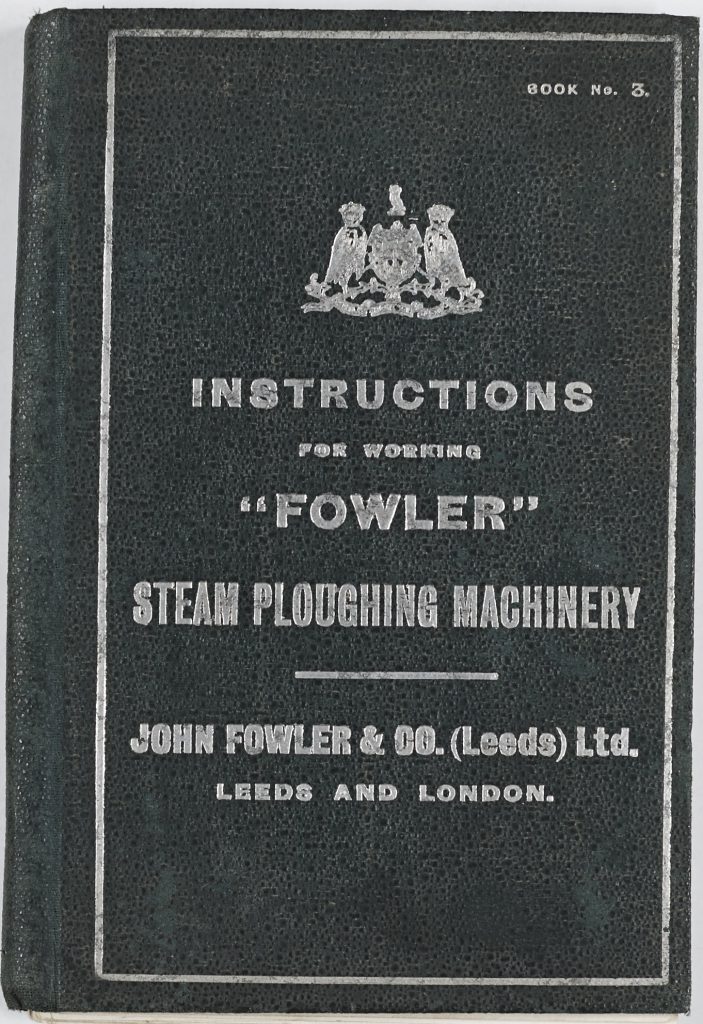
How to Plough
In the early trials a single engine and a windlass was used. The plough was drawn back and forth across the field via a windlass driven either by a belt or solid coupling from the engine. The anchors, rope-porter, pulleys etc had to be moved manually while the engine and windlass stayed in the same place. A self-moving anchor was developed later where the engine had a double drum: one to take the loaded rope and one for the tail-end rope. This became known as the Roundabout System.
Earlier steam cultivating used a roundabout cable system with one engine. However, the two-engine system soon came into use and was preferred for its practicality. This is what is usually seen today at demonstrations.
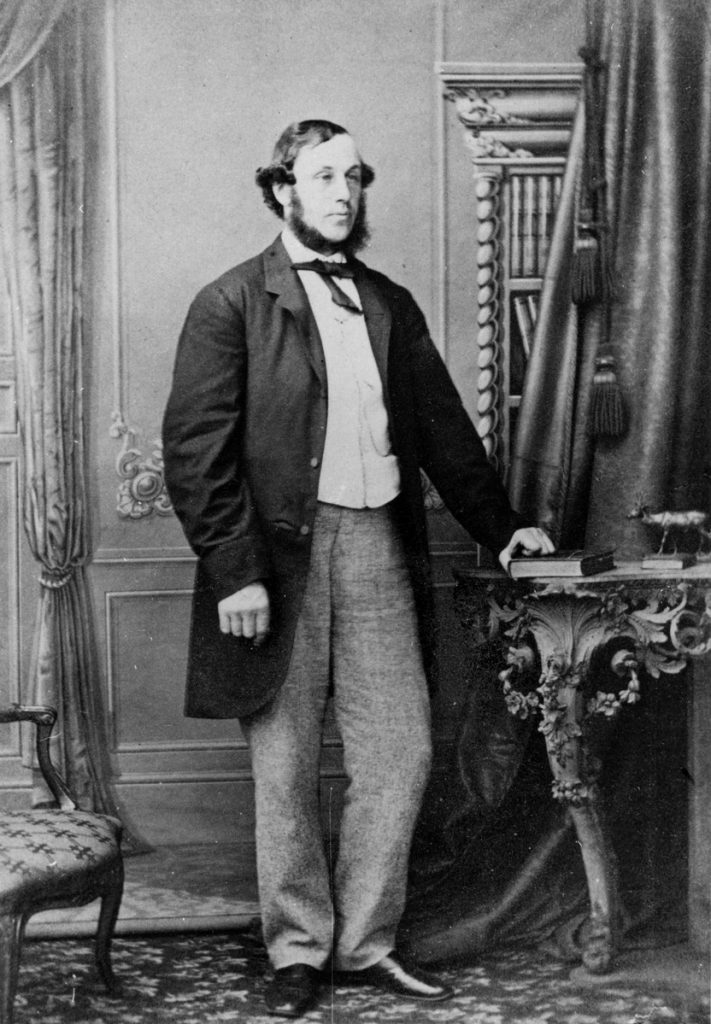
John Fowler
John Fowler was born in Melksham, Wiltshire to wealthy Quaker parents on 11th July 1826. An inspiration for his inventions came after a holiday to Ireland in 1849. Fowler saw the devastation, poverty and starvation caused by the Irish potato famine and felt there must be an invention that would help prevent this disaster happening again and make the production of food much cheaper and less prone to disaster in the long run.
Fowler wanted to help reclaim bogland by improving drainage which would allow farmers to wield better and more regular crops. His first invention was a mole plough. The machine, powered by horses, dragged itself across the field on rollers, pulling the mole plough as it went. The mole would have drainage pipes attached behind and these would be laid in the channel created by the mole. On completing each length of drains, the engine would be turned and repositioned ready for the next row.
In the early stages of his company Fowler often outsourced much of his manufacture to other companies such as Clayton and Shuttleworth or Ransomes of Ipswich. His enthusiasm for his work and his ability to solve problems creatively helped him to have long standing working relationships with many people throughout his short lifetime.
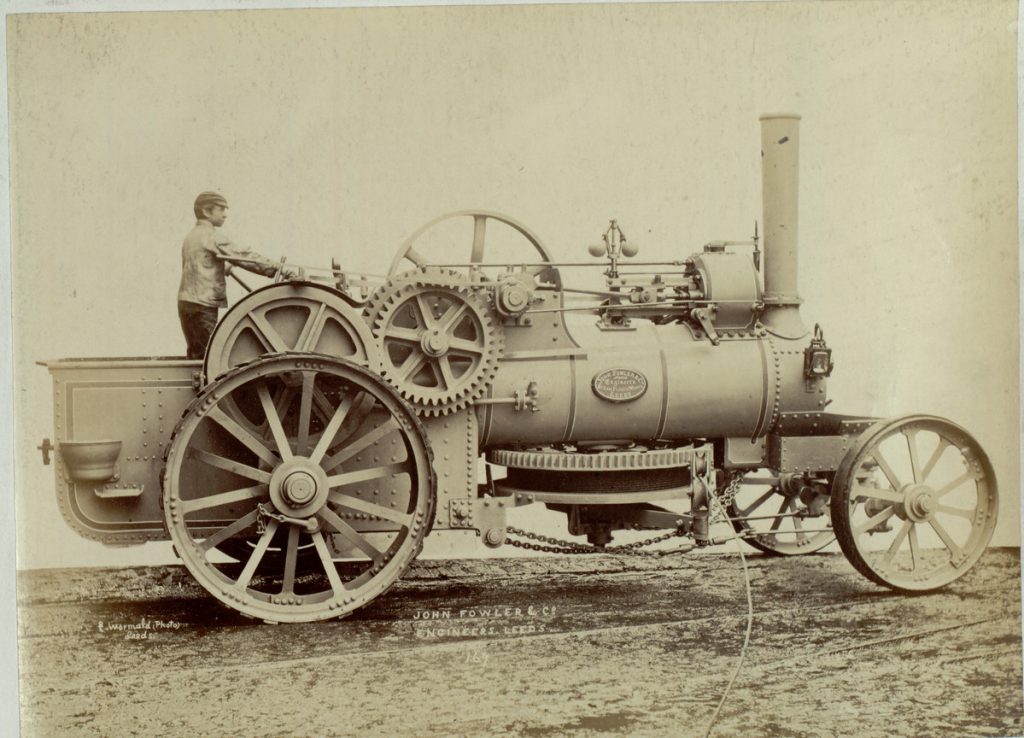
Ploughing Trials
As technology developed, influential bodies like the Royal Agricultural Society of England (RASE) were interested in finding the most efficient and cost-effective ways to improve farming. They held prize competitions for inventors to showcase their ideas for improving farm work including Ploughing Trials, which would include the emerging use of steam. The steam plough competitions would require the competitors to plough an acre of land as quickly and as cleanly as possible but the judges would also consider the price of the machine and how well the work was done in comparison to horses.
John Fowler exhibited his inventions in a number of these trials. Whilst many of his attempts proved his engineering was sound, he did not necessarily provide assurance that the job could not be done more cheaply by horses. By then the prize had been increased to a coveted £500; a large sum for those day, worth about £62,000 today.
The first contest was held at the Society’s summer meeting in Carlisle in 1855 with more events at Chelmsford in 1856 and Salisbury in 1857, without an award being made to any of the participants.
The judges however awarded a medal to John Fowler as a reward for his strenuous endeavours, adding, ‘Steam ploughing as such had attained a degree of excellence comparable in point of execution with the best horse work’.
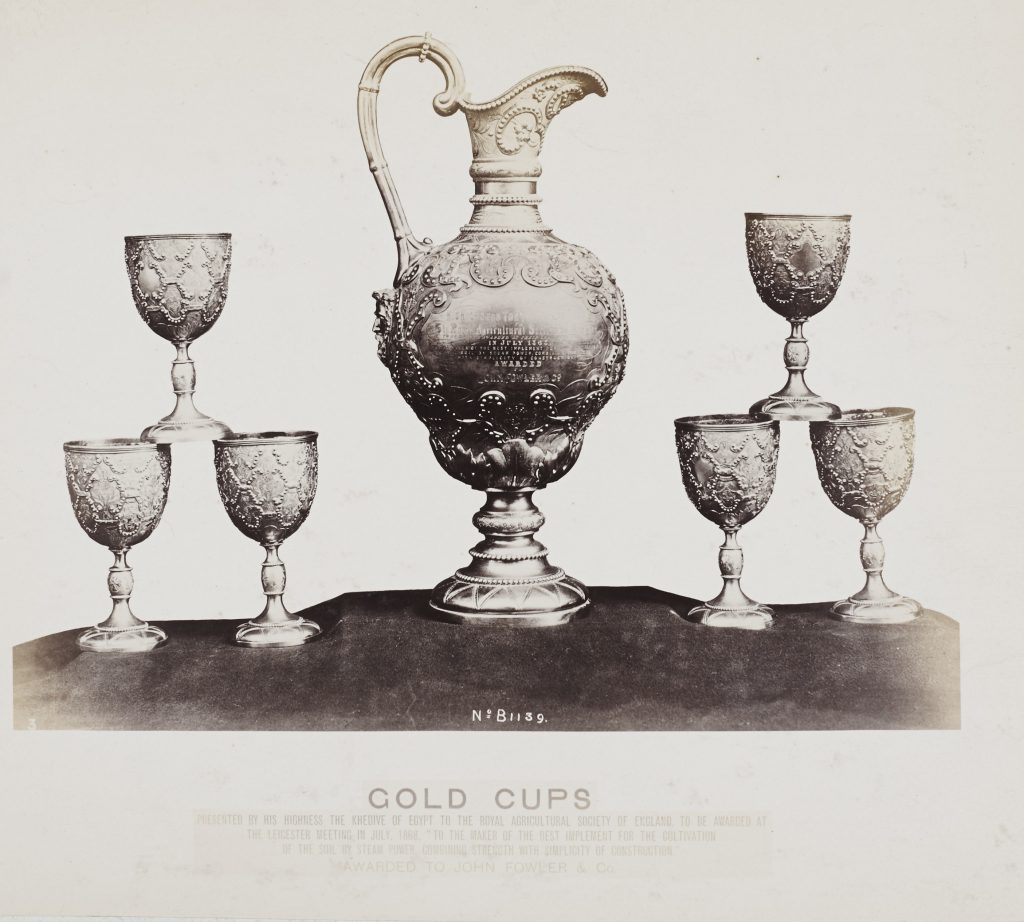
Success at the Chester RASE Ploughing Trials 1858
After further experimentation, he competed at the RASE trials held in Chester in 1858. Fowler was up against Thomas Rickett’s rotary steam cultivator, Charles Burrell’s direct traction plough, and William Smith’s own roundabout system.
The judges announced Fowler the winner in the Autumn of 1858, adding in their report that:
‘It is beyond question that Mr. Fowler’s machine can turn over the soil and in an efficient manner at a saving compared with horse labour; while in all cases it is left in a far more desirable condition and better adapted for all the purposes of husbandry. We are unanimously of the opinion that he is fully entitled to the prize of £500’.
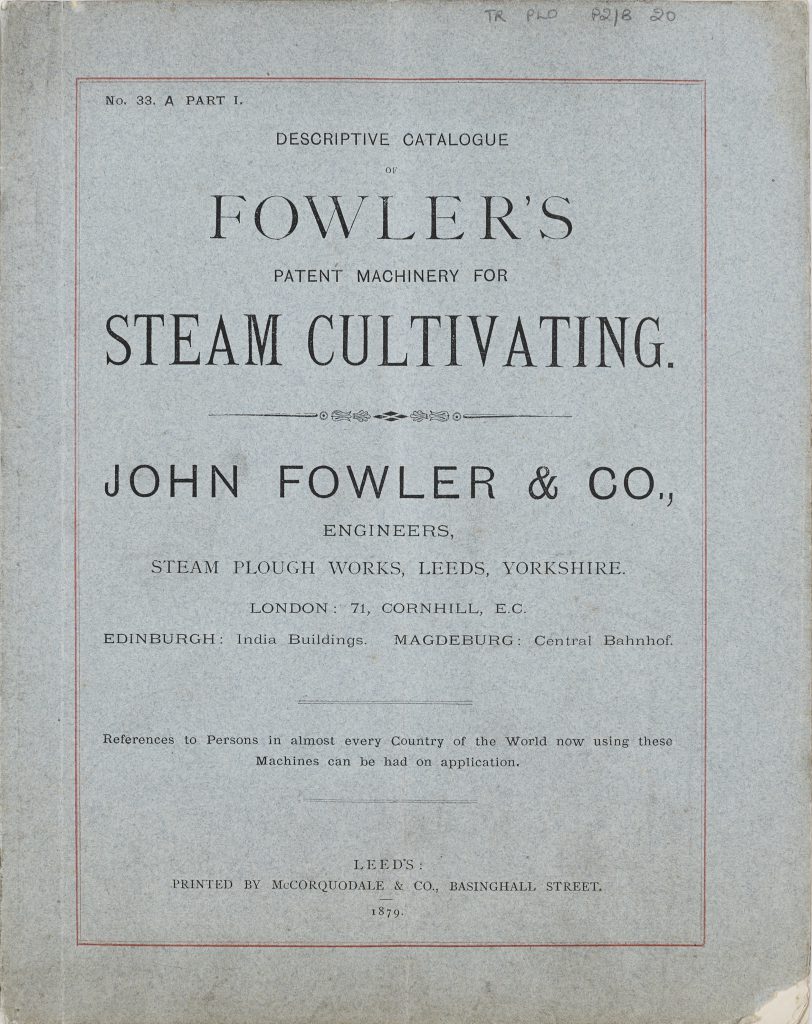
John Fowler & Co.
In 1851 Fowler felt that £150 was too expensive for the average farmer to pay for a drainage machine and he worked hard to create a contract that would save the farmer 35%-65% on costs to use his machine. He also created a hiring scheme by day or month for those who could not afford to purchase one.
Fowler set up his own manufacturing business in Leeds in around 1856 as a civil engineer, where he collaborated with an Essex farmer, David Greig, who was instrumental in helping Fowler apply his steam ploughing ideas to the land.
It was apparent through the work of Fowler, that he kept the farmer in mind throughout his inventing career. Fowlers sent a trained man with all the new tackle they sold to instruct the local men in the handling of engines and implements. The new purchasers often offered these men reimbursements to stay on. It then fell on these men to explain to those who could neither read or write the rudiments of driving steam engines or steering the plough and cultivator.
In 1875 the cost of a Fowler single cylinder ploughing engine and roundabout ploughing tackle was about £845.00 and a Burrell was £791.00. In 1875 Fowlers supplied 142 new engines and their production peaked the following year when they supplied 212 machines. Gradually the use of the double-engine system became established and by 1879 the data suggests that there were as many as 1,623 ploughing engines in the UK.
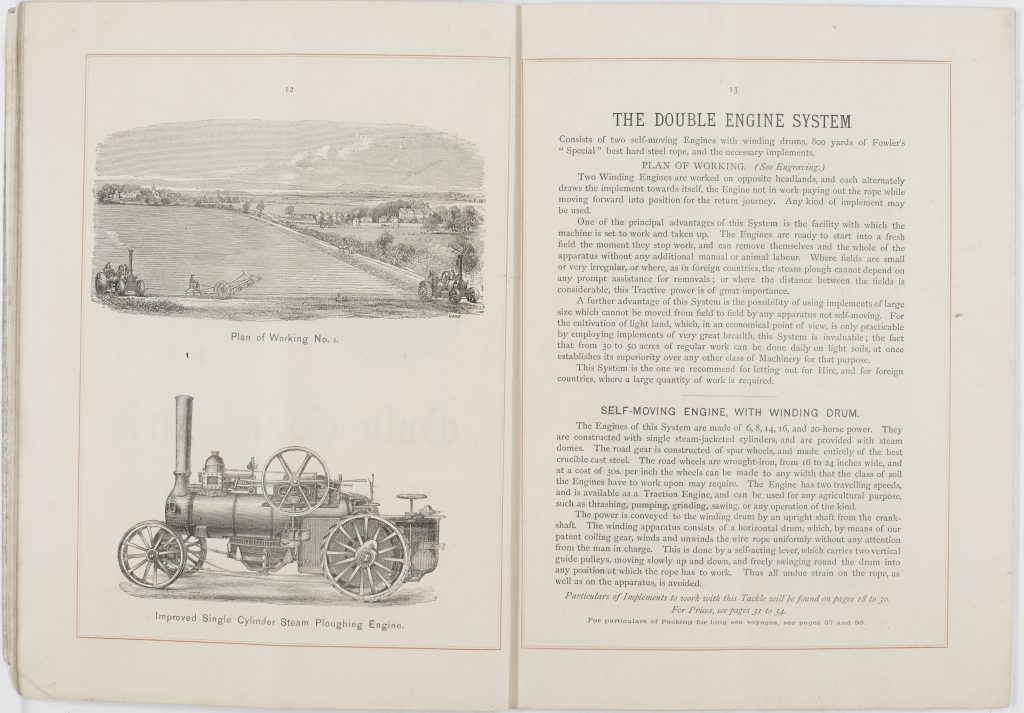
John Fowler & Co.
In his 1859 catalogue each machine part was labelled to make replacements easy. In 1860 another Fowler catalogue suggested the machinery was so easy it could be worked by ‘the ordinary farm labourer… and very few parts that cannot be put back in order by any blacksmith’.
Most steam ploughing and cultivation was undertaken by contractors. Many farmers, other than the largest landowners, found the initial cost too high to justify investment. Each set of tackle usually comprised four men and a boy living together in a van which travelled with the engines, implements and water cart.
Fowlers dominated the ploughing engine market and supplied 2,146 of the 2,450 cable ploughing engines sold in the UK. They also supplied the overseas market and between 1880 and 1915 91% of John Fowler ploughing engine sales were exported.
Fowler Across the Globe
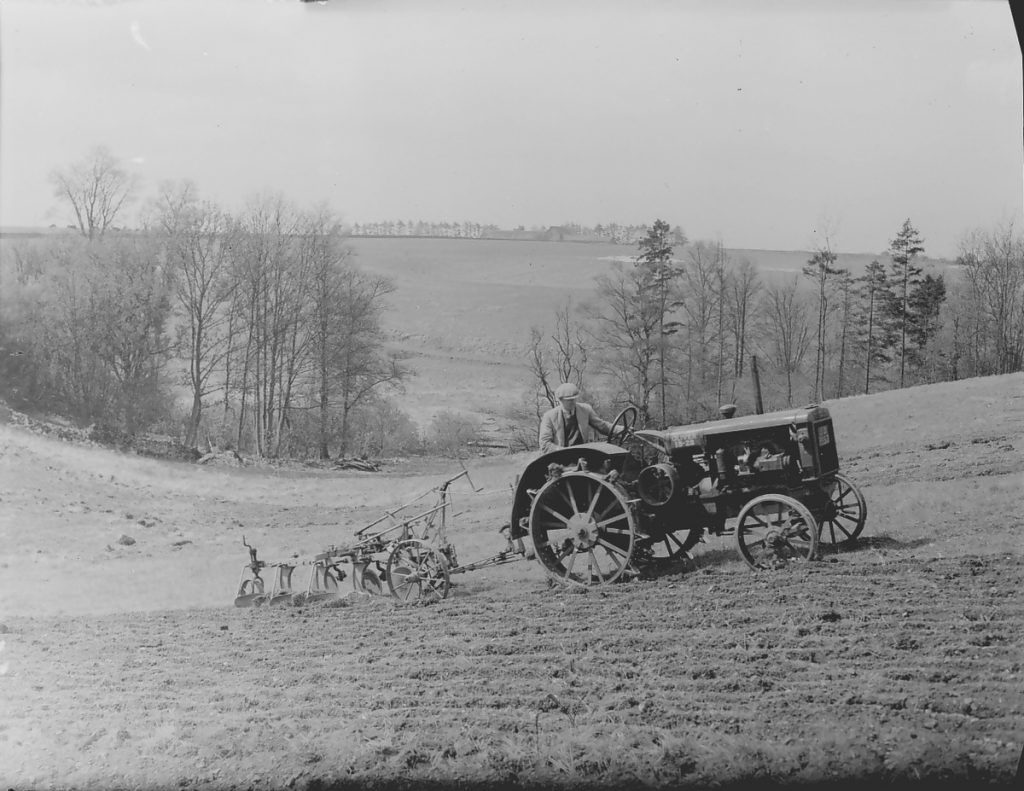
The Decline of Fowler and Steam Ploughing
Steam cultivation was comparatively specialised activity. It worked best in certain soil conditions and where the land was flat and fields larger, typically in the eastern counties.
The UK Government was concerned about the threat to food production posed by German submarines, so they ordered 60 sets of ploughing engines from Fowlers which were then issued to contractors.
The introduction of the internal combustion tractor in the earlier years of the 20th century largely replaced the horse in most of the country. It was far cheaper to operate than steam tackle. Nevertheless, until tractors became more powerful, the steam plougher still had its place in certain parts of the country. It had a renaissance in the second world war to increase food production but soon disappeared after peace came. Because of the power and utility of the cable worked implement was still considered valuable, from the 1930s a few steam ploughing engines had been converted to diesel. Some survive in this form.
The last steam contractor, John Patten, held on in Essex and Suffolk but the firm was wound up after his death in 1960 with many of the engines scrapped.
Developments with the internal combustion engine, a hydraulic system for attaching implements and cheaper production methods made the tractor a truly viable alternative to steam power on the farm and they gradually became the familiar sight they are in the farming landscape today.
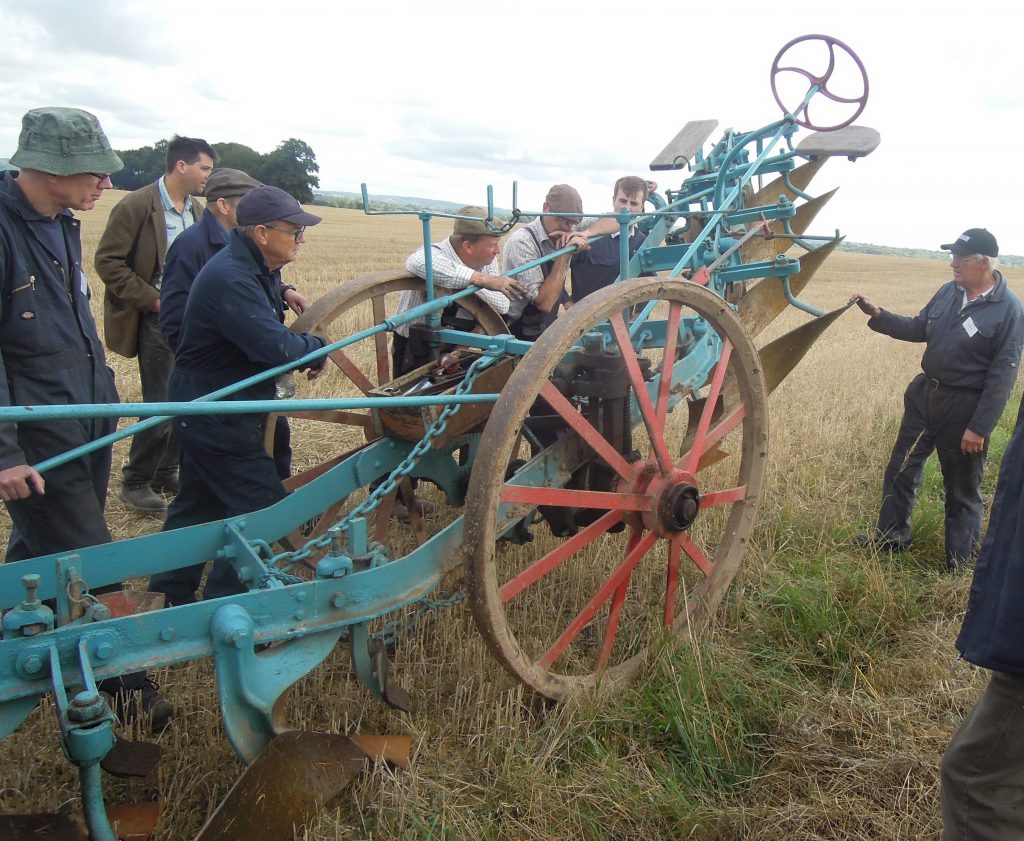
The Steam Plough Club
The Steam Plough Club
Founded in 1966 by the late Harold Bonnett, the Steam Plough Club is about keeping the tackle operating; not just the machinery but passing on the old and vital skills too. It maintains archival records, provides technical advice, gives instruction and help to today’s tackle owners, and runs competitions for the best work at the cable plough, just like the earlier days of the 1850s. John Fowler & Co’s machinery forms the bedrock of the club’s activities, as the majority of machinery surviving today was Fowler-made. However, makers like Burrell, Howard, and McLaren are not forgotten.
The SPC produces a quarterly journal for its members, the Steam Plough Times, and has a must-visit website at https://www.steamploughclub.org.uk.
With great thanks to the Steam Plough Club for their contributions of knowledge and time in developing this exhibition.